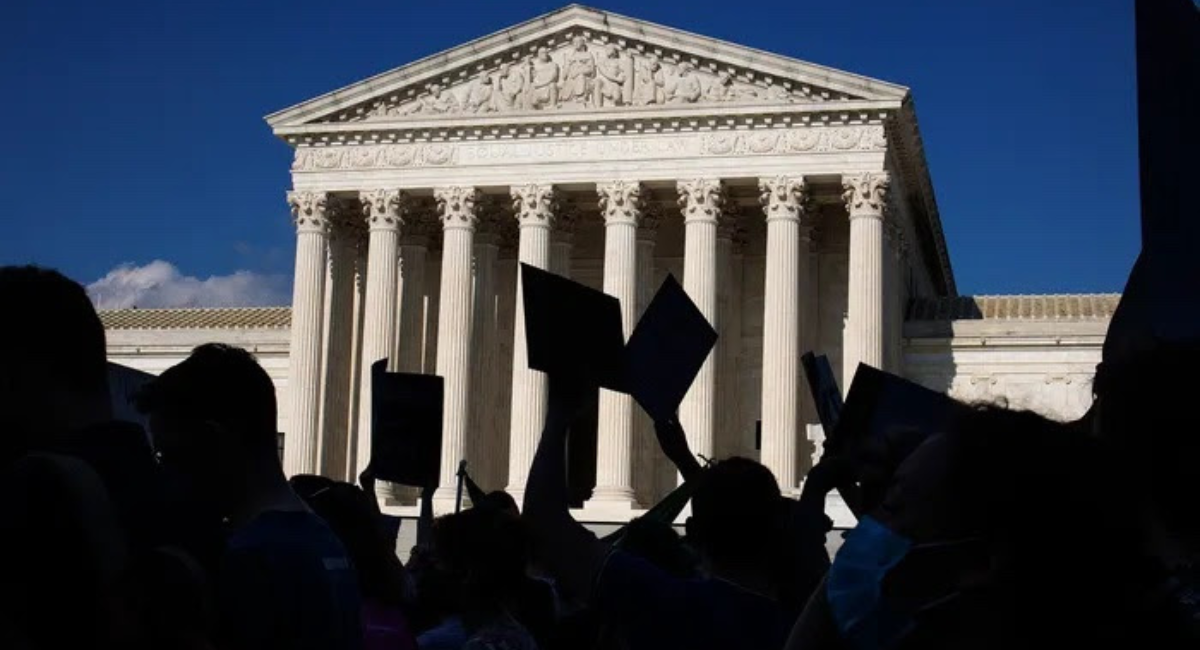A year after the Supreme Court overruled 45 years of precedent with Affirmative Action, how are colleges and universities adapting?
The June 2023 decision, which prohibits public and private institutions from including race in considering applicants to admit, shook up the world of higher education.
While schools saw more applications by nonwhite students than ever, per midyear reports, unprecedented federal student aid delays are expected to drop enrollments — particularly for nonwhite students.
At a Friday, June 28 Ethnic Media Services briefing, education policy, law and civil rights experts discussed new trends among schools since the court prohibition of public and private institutions from including race in considering which applicants to admit.
Delays with federal aid — and thus with enrollment commitments — made it hard to see the road ahead for students of color, speakers agreed. However, after June 2023, many institutions after the decision cut Diversity, Equity and Inclusion (DEI) programs and stopped tracking admissions data by race entirely, although neither DEI nor tracking are prohibited by the court decision.
Speakers said the future of equal opportunity for students of color may hinge on whether schools nationwide continue to overextend the court decision beyond the admissions process, and whether students are allowed the consideration of race and background through alternative routes like admission essays and scholarships.
Financial aid and DEI
Delays and mistakes with the Free Application for Federal Student Aid (FAFSA) — first when the application deadline was moved from October 1 to December 31, 2023 — were worsened by a new application form involving miscalculations to formulas used to determine aid.
This tumult has significantly “impacted our ability to see what’s happening with college enrollment for the coming year,” said Dr. Vikash Reddy, senior director of policy research at The Campaign for College Opportunity.
Due to continued FAFSA rollout disruptions, many schools have delayed enrollment commitment deadlines, “so we don’t yet know what the new year’s classes will be,” he explained. Many schools, including Yale, “cannot even tell us how FAFSA issues have impacted their admissions for minority applicants, because they separated their race and ethnicity data from the admissions data.”
Broader impacts on funding for DEI programs have been “chilling,” Reddy said. “Officials in Missouri, Kentucky and Wisconsin in particular are interpreting the Supreme Court ruling to mean that race-conscious scholarships should also be discontinued.”
In 2023 alone, over 45 state bills targeting DEI funding were introduced nationwide, particularly in Texas and Florida.
Meanwhile, the University of Missouri recently tried to reclassify donor-created scholarships intended for minority students, while the University of Utah shuttered centers for black, LGBTQ and woman students, per HB 261, a new Utah law that prohibits student services for individual students based on “personal identity characteristics.”
However, “there are institutions trying to find equitable ways forward for higher education” through measures like holistic review,” Reddy said. For instance, California has outlawed the consideration of race in public education since 1996 under Proposition 209, “but under the leadership of UCLA and UC Berkeley, we’ve seen some of the most diverse classes in 25 years come in recent years.”
“It’s emblematic of the purpose of the attack on Affirmative Action,” said Jin Hee Lee, director for strategic initiatives at the NAACP Legal Defense Fund: “The falsehood that we already live in a world of equal opportunity … We’re now at a time when a university administrator is accused of discrimination, because they want to address long-standing barriers for marginalized people.”
“This is not new. These attacks on DEI programs follow attacks on so-called ‘Critical Race Theory’, in K-12 and higher education classrooms a few years ago, just after the summer of 2020,” she continued, “with the largest civil rights demonstration in our nation’s history, when people from all backgrounds came together to demonstrate their opposition to racial inequality.”
“At the very core of these issues is whether we live in a country that is going to address our inequalities,” she added, “or believe in this false notion that we live in a race-blind society.”
Asian American students
“By using terms such as ‘zero-sum,’” the overturning of Affirmative Action “divided the Asian American community from other communities of color … and divided all of us,” said John C. Yang, president and executive director of Asian Americans Advancing Justice-AAJC.
“In the trial itself, the district court judge found that after extensive evidence was presented, there was no data to support the notion that Asian Americans are being discriminated against,” he explained, “and prior to the decisions, the incoming class of Harvard University, for example, was approximately 26% to 28% Asian American.”
“But Asian Americans are harmed by these decisions … and benefit from diversity initiatives” well after higher education, he continued. “The Asian American community suffers from a ‘model minority’ myth suggesting that we are doing better than society as a whole, and so that efforts like Affirmative Action and DEI do not benefit them. That belies current demographics.”
For instance, Asian Americans represent only 3% of executives in corporate America, while representing about 7% of the total U.S. population.
There is also an 80% dropoff for Asian Americans when moving from entry-level ranks to the C-suite or board levels of corporations.
White individuals are twice as likely to be promoted as their Asian American counterparts; in fact, Asian American white-collar workers are the least likely group among any race to be promoted into management.
“Equal access to education has never been zero-sum,” Yang added. “We have heard many stories from Asian American students deciding that they don’t want to apply to a particular college at all … because they’re not sure whether and how their application will be treated.”
The legal road ahead?
“Efforts of the Supreme Court decision’s proponents to extend this ruling beyond higher education, to challenge DEI initiatives across the board … diverts us from efforts to ensure that not considering race in admissions would still ensure equal opportunity for applicants of color,” said Thomas A. Saenz, president and general counsel of the Mexican American Legal Defense and Educational Fund.
When admissions data does emerge after the tumultuous FAFSA rollout cycle completes, the numbers “may not be an accurate reflection of the full impact of the decision,” he continued.
After Proposition 209 outlawing considerations of race in California public schools, for instance, “many said the drop in Latino students was overstated. That was false, and will be false nationwide,” Saenz explained, “because the Latino community is a younger, growing community. So, the number of college-eligible Latino students by age will dramatically increase in years to come, cushioning the data against a drop in admissions … it does not, however, mean that the impact is any less severe.”
“Institutions receiving federal funding, like Harvard, and virtually every other private university in the country … that fail to collect data on race to ensure their admissions criteria doesn’t have an unjustified discriminatory effect, violate the very same law used in the decision,” continued Saenz: Title VI of the Civil Rights Act of 1964, which also “prohibits race discrimination for recipients of federal funding, including virtually every U.S. university, public or private.”
What can be done to facilitate equal opportunity, in response to the Affirmative Action decision?
“Alternative criteria for admissions that would eliminate or minimize the discriminatory effects of many current criteria,” said Saenz, including “not only standardized tests, which have long had such a demonstrated discriminatory effect, but also counselor recommendations, teacher recommendations, and even who gets assigned to high-level AP and IB (International Baccalaureate) courses.
“This is the legal situation right now,” he added. “We don’t know yet where the new reality will end up.”




